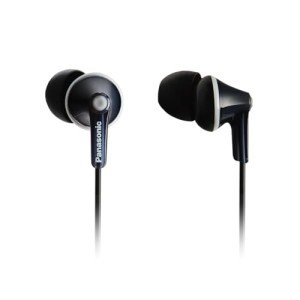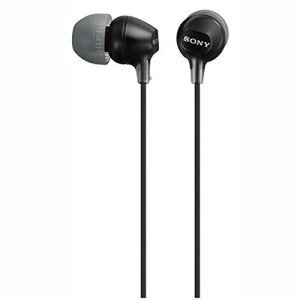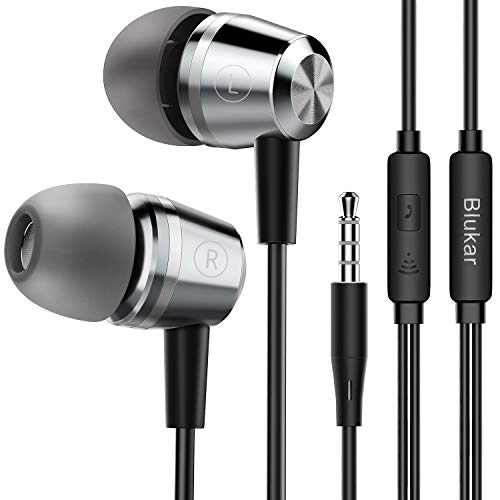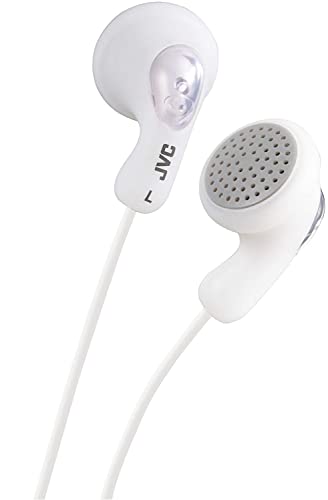Understanding Your Audio Needs: A Guide to Finding the Perfect In-Ear Headphones
In-ear headphones, also known as earbuds or earphones, have become an essential accessory for music lovers, gamers, podcast enthusiasts, and anyone who enjoys high-quality audio on the go. These compact and portable devices offer a convenient way to enjoy your favorite tunes or immerse yourself in virtual worlds without disturbing others. However, with the plethora of options available in the market today, it can be overwhelming to choose the right pair that fits your individual audio needs. In this guide, we will walk you through the key factors to consider when selecting the perfect set of in-ear headphones.
Sound Quality:
The first and foremost aspect to consider is the sound quality. After all, it is the primary reason you are investing in headphones. Different headphones have their own unique sound signatures, ranging from bass-heavy to more balanced or even emphasizing treble. Understanding your audio preferences is crucial in finding the perfect in-ear headphones that deliver the sound experience you desire.
Comfort and Fit:
No matter how excellent the sound quality is, it won't matter much if the headphones are uncomfortable or constantly falling out of your ears. When choosing in-ear headphones, pay attention to factors such as the shape of the ear tips, presence of optional ear fins or wings for added stability, and the overall build quality. Finding a comfortable fit that stays in place during your activities ensures an enjoyable listening experience.
Noise Isolation:
If you often find yourself in noisy environments or need to focus on your audio without distractions, consider in-ear headphones with good noise isolation capabilities. This feature uses a snug fit and sound-blocking materials to reduce external noise, allowing you to immerse yourself fully in your audio content. This is particularly important for those who frequently travel, work in bustling open offices, or use public transportation.
Wireless or Wired:
In-ear headphones are available in both wireless and wired options. Wireless headphones provide the convenience of no cables, allowing freedom of movement and eliminating the hassle of tangling wires. On the other hand, wired headphones are often preferred by audiophiles for their uncompressed audio quality and compatibility with a wide range of devices. Assess your lifestyle, preferences, and usage patterns to determine whether wireless or wired headphones are the best fit for you.
Additional Features:
Beyond the core functionalities, in-ear headphones may come with additional features that enhance the overall experience. Some common extras include in-line controls, built-in microphones for hands-free calling, water or sweat resistance for active individuals, and compatibility with virtual assistants like Siri or Google Assistant. Consider which features are important to your particular needs and look for headphones that offer them.
Budget:
Lastly, establishing a budget beforehand can help narrow down your options and prevent overspending. In-ear headphones are available at various price points, ranging from budget-friendly to high-end models. Determine how much you are willing to invest in a pair that satisfies your requirements while still offering value for money.
By evaluating factors such as sound quality, comfort and fit, noise isolation, wireless or wired connectivity, additional features, and your budget, you can make a well-informed decision when choosing the right in-ear headphones for your specific audio needs. Happy listening!
Decoding Technical Specifications: What to Consider When Selecting In-Ear Headphones
When it comes to selecting the perfect pair of in-ear headphones, there are several key technical specifications to consider. These specifications play a crucial role in determining the sound quality, comfort, and overall performance of the headphones. To help you make an informed decision, let's decode some of the most important technical specifications:
1. Frequency Response
Frequency response refers to the range of audio frequencies that the headphones can reproduce. It is usually represented in Hertz (Hz). A wider frequency response means that the headphones can produce a broader range of sounds, resulting in more detailed and accurate audio reproduction.
2. Impedance
Impedance measures the resistance of electrical current flowing through the headphones. It is measured in Ohms (Ω). Lower impedance headphones require less power to produce high volumes, making them a good choice for portable devices. Higher impedance headphones, on the other hand, tend to offer better sound quality, but may require a dedicated amplifier to drive them.
3. Sensitivity
Sensitivity indicates how efficiently the headphones convert electrical signals into sound. It is measured in decibels per milliwatt (dB/mW). Higher sensitivity headphones will produce a louder sound at the same volume level compared to headphones with lower sensitivity. This is an important consideration if you plan to use your headphones with low-power devices such as smartphones or laptops.
4. Driver Size
The driver is the part of the headphones that produces sound. It is typically measured in millimeters (mm). Larger driver sizes generally result in better bass response and dynamic range. However, it's important to note that driver size alone is not indicative of audio quality, as other factors such as the quality of the drivers and overall design also play a significant role.
5. Noise Isolation/Cancellation
For those looking to block out background noise, noise isolation or noise cancellation is an important feature to consider. Noise isolation refers to the physical design of the headphones, which helps to passively block out external sounds. Noise cancellation, on the other hand, actively reduces external noise through the use of microphones and special circuitry. Depending on your needs and preferences, you can choose between headphones that offer either or both of these features.
By considering these technical specifications, you can narrow down your options and find the perfect pair of in-ear headphones that cater to your preferences and requirements. Whether it's enjoying your favorite music, immersing yourself in a podcast, or simply wanting a high-quality audio experience, choosing the right in-ear headphones will enhance your overall enjoyment and satisfaction.
The Perfect Fit: Tips and Tricks for Selecting Comfortable and Secure In-Ear Headphones
When it comes to choosing in-ear headphones, finding the perfect fit is crucial. Not only does it ensure comfort during extended use, but it also guarantees a secure fit that stays in place even during vigorous activities. Here are some valuable tips and tricks to help you select the most comfortable and secure in-ear headphones:
1. Different Earbud Sizes
Ears come in various shapes and sizes, and so do earbuds! Most in-ear headphones come with different-sized ear tips, such as small, medium, and large. Experiment with each size to find the one that provides the best fit for your ear canal. The right size will create a seal that reduces outside noise and prevents the earbuds from slipping out.
2. Foam or Silicone Ear Tips
Consider the material of the ear tips as it can significantly impact comfort and fit. Silicone ear tips are the most common and provide a secure fit while remaining comfortable for daily use. On the other hand, foam ear tips conform to the unique shape of your ear canal, offering superior noise isolation and enhanced comfort. Try both options to determine which material works best for you.
3. Over-ear Hooks
For those who lead an active lifestyle or enjoy exercising with music, consider opting for in-ear headphones with over-ear hooks. These hooks provide extra stability and prevent the earbuds from falling out during intense movement. Look for headphones with adjustable or flexible hooks to ensure a customizable fit.
4. Wireless or Wired
Decide whether you prefer wireless or wired in-ear headphones. Wireless options provide the freedom to move without being tethered to your device, making them ideal for workouts or when you're on the go. However, wired headphones may offer a more reliable and consistent audio experience. Consider your lifestyle and priorities to make the right choice.
5. Brand Reputation and Reviews
Research different brands and read customer reviews to get an idea of their reputation for comfort and fit. Look for headphones that consistently receive positive feedback regarding their ergonomic design and secure fit. Additionally, consider brands known for their superior sound quality to ensure an all-around satisfying listening experience.
6. Test and Adjust
Ultimately, the only way to know if a pair of in-ear headphones is the perfect fit for you is by testing them out. Take advantage of return policies or try them in-store if possible. Once you've got a pair, wear them for an extended period to ensure they remain comfortable and secure. Adjust the earbuds and ear tips as needed until you find the most comfortable configuration.
Remember, finding the right in-ear headphones is primarily a personal choice. What works for one person may not work for another. By following these tips and tricks, you'll significantly increase your chances of discovering the perfect fit that provides ultimate comfort and secure listening experience every time.




